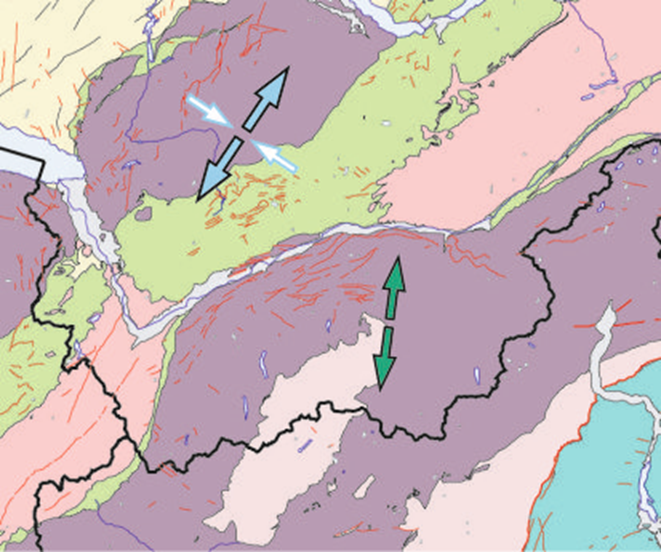Causes of earthquakes in the Valais
Essentially, earthquakes are caused by the sudden release of stresses in the earth's crust. These stresses are brought about by large-scale continental movements. If they are stronger than the rock, a sudden rupture occurs along existing areas of weakness in the subsurface, triggering the seismic waves felt on the earth's surface. Modern seismology uses seismic observations to draw conclusions about the causative stresses and so deduce regional differences in the stress field.
In the northern Valais, as in the northern Alpine foothills, the stresses in question are those caused by the opening of the Atlantic and the collision between Africa and Europe, which are also responsible for the formation of the Alps. In the southern Valais Alps, however, most earthquakes are evidence of lateral spreading: this results from a superposition of stresses from the ongoing collision between Africa and Europe and of compensatory stresses caused by the topography of the Alps and their roots. Obviously, stresses in the earth's crust have changed over the course of millions of years.
